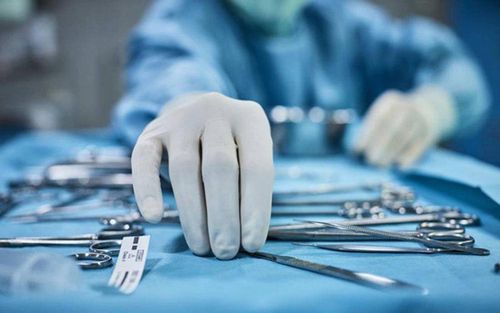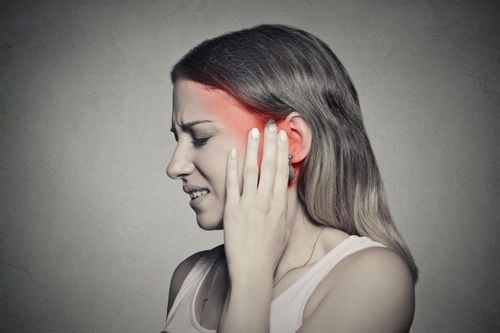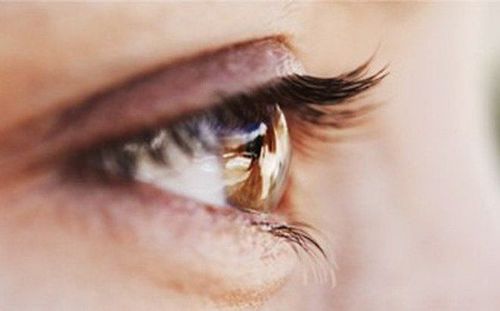This is an automatically translated article.
The article was consulted with Dr. Phan Dinh Thuy Tien - General Internal Medicine - Department of Medical Examination & Internal Medicine - Vinmec Nha Trang International General Hospital.Examination of the 12 pairs of cranial nerves is an important component of the general neurological function tests. Each step of the examination needs to be detailed and accurate, in order to identify abnormalities or damage in each individual cranial nerve. This is the basis for the diagnosis and follow-up of the disease in the future.
1. What are 12 pairs of cranial nerves?
The 12 pairs of cranial nerves are pairs of nerves that come out directly from the central nervous system instead of from the spinal cord like other nerves in the trunk. The information processing center, receiving and executing control of the cranial nerves depends on the gray nuclei of each nerve fiber in the brain parenchyma.The pairs of cranial nerves are numbered sequentially with Roman numerals, including:
The olfactory nerve (I) perceives smell and is one of the very few nerves capable of regenerative capacity. The optic nerve (II) carries visual information from the retina of the eye to the brain. The oculomotor nerve (III) controls most eye movements, pupillary constriction, and maintains eyelid opening tone. The pulley (IV) nerve controls the pulley muscle of the eye, which helps with eye rotation. The trigeminal nerve (V) senses sensation and motor function in the face and mouth. The external oculomotor nerve (VI) controls the external oculomotor muscle of the eye, helping the eye to look outward. The facial nerve (VII) innervates the muscles of facial expression and functions to transmit taste sensations from the anterior two-thirds of the tongue and oral cavity. The vestibular nerve (VIII) is responsible for transmitting sound information and regulating balance from the inner ear to the brain. The glossopharyngeal (IX) nerve receives sensation from the tonsils, pharynx, middle ear, and the rest of the tongue. The vagus nerve (X) controls the functioning of most of the body's internal organs, including regulating heart rate, gastrointestinal motility, sweating, and even movements in the mouth, such as speech. speak and keep the larynx open and closed to breathe. The accessory nerve (XI) controls movement of the muscles of the shoulder and neck. The hypoglossal nerve (XII) controls tongue movement for speech, chewing, and swallowing. Thereby, the way to examine 12 pairs of cranial nerves is also based on the function of each nerve in turn. However, the examination operation depends on the qualifications, habits and experience of the doctor. Usually, in each approach, the doctor will evaluate according to functional groups, corresponding to the examination of smell (I), visual field and visual acuity (II), eye movement (III, IV, VI). ) and pupils (III, sympathetic and sympathetic), sensory function of the face (V), strength of the facial muscles (VII) and shoulder muscles (XI), hearing (VII, VIII), taste (VII, IX, X), pharyngeal movements and reflexes (IX, X), tongue movements (XII).
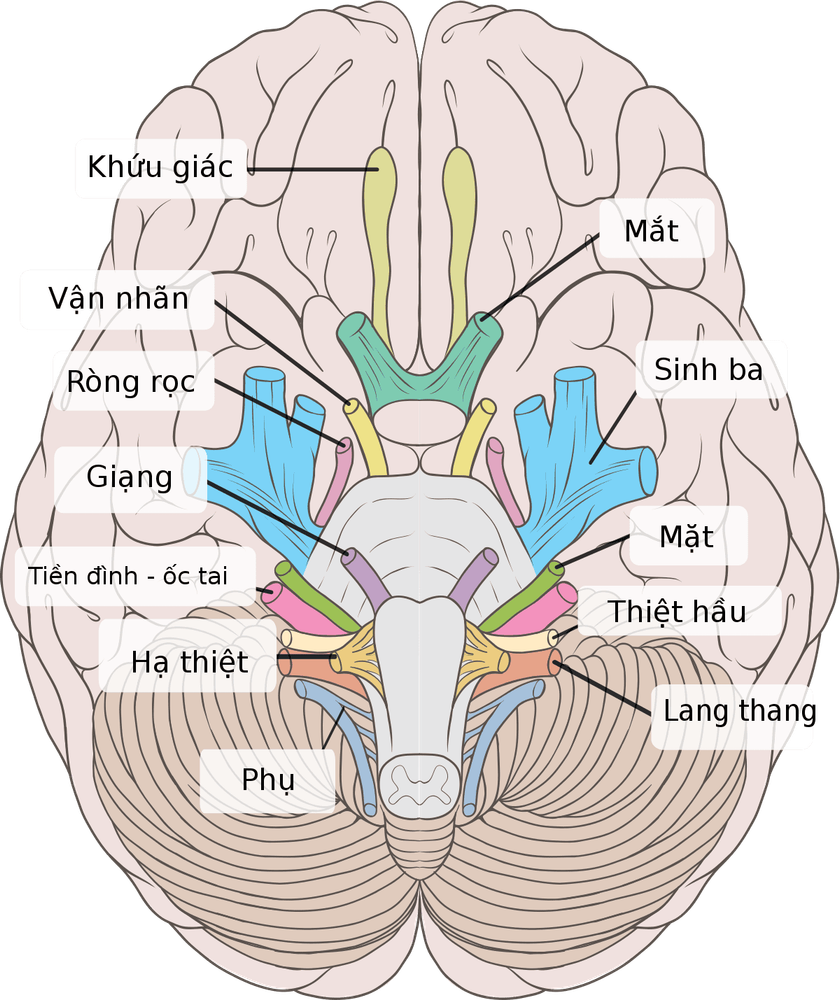
Sơ đồ 12 đôi dây thần kinh sọ não
2. Instruments needed to examine 12 pairs of cranial nerves
The doctor needs to fully prepare the following tools before examining the 12 pairs of cranial nerves:Alcohol-based hand sanitizers Foods with distinct flavors (eg: orange / lemon peels) , coffee, vinegar, etc.). Cotton. Flashlight. Ophthalmic lamp. tuning fork. Hammer Percussion Neurological Reflexes Alphabetical Optometry
3. How to examine 12 pairs of cranial nerves
3.1 First cranial nerve Odor perception, a function of the 1st cranial nerve (olfaction), is usually evaluated only after head trauma or during damage to the anterior ethmoid region if the patient reports loss of sensation unusual smell or taste.The patient is asked to identify the smell of objects or foods such as soap, coffee, orange or lemon peels with each nostril while the other nostril is blocked. Do not use strong odors such as alcohol, ammonia and other stimulants because they can irritate the cranial nerve V.
3.2 Second nerve For examination of the second cranial nerve (visual) ), vision is tested with a wall-mounted alphabet for distance vision or a hand-held alphabet for near vision. Each eye is evaluated separately, with the other eye covered during examination of the contralateral eye.
Visual fields are tested by assessing visual acuity in all 4 quadrants and also in each eye.
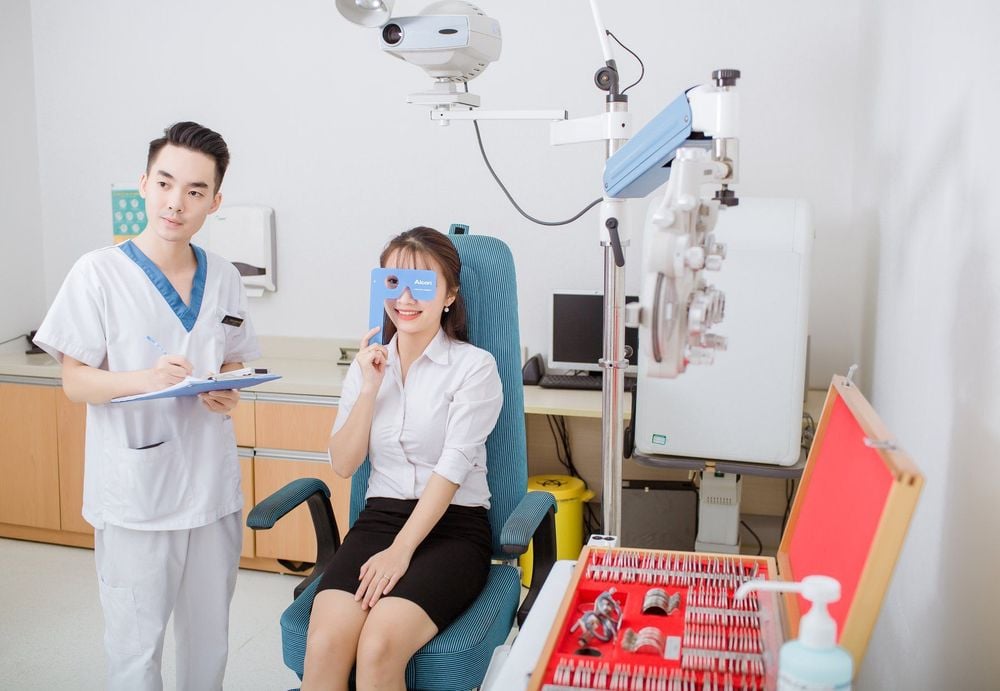
Khám dây thần kinh số II bằng cách kiểm tra thị lực
Specific examination by asking the patient to follow a moving target visually (e.g. examiner's finger, spotlight) to all 4 quadrants (including midline) and to nose side. This test can detect nystagmus and oculomotor paralysis of the eye muscles.
In addition, evaluation of eyelid function and pupil size, ability to respond to stimuli when irradiated are also the goals of examination of the III cord. Normally the pupil will be symmetrical, shrinking when there is strong light shining directly; If there is a difference between the two pupils, pathology is suspected on the non-photoresponsive side.
3.4 V nerve For the V cranial nerve, motor and sensory function will be examined in three areas of the face, corresponding to the distribution of the three branches from this nerve.
Sensory function is recognized by palpation with cotton wool on the face and also on the inferior cornea or the corneal surface.
Motor function is tested by palpating facial muscles while asking the patient to grind their teeth and or open their mouth against resistance.
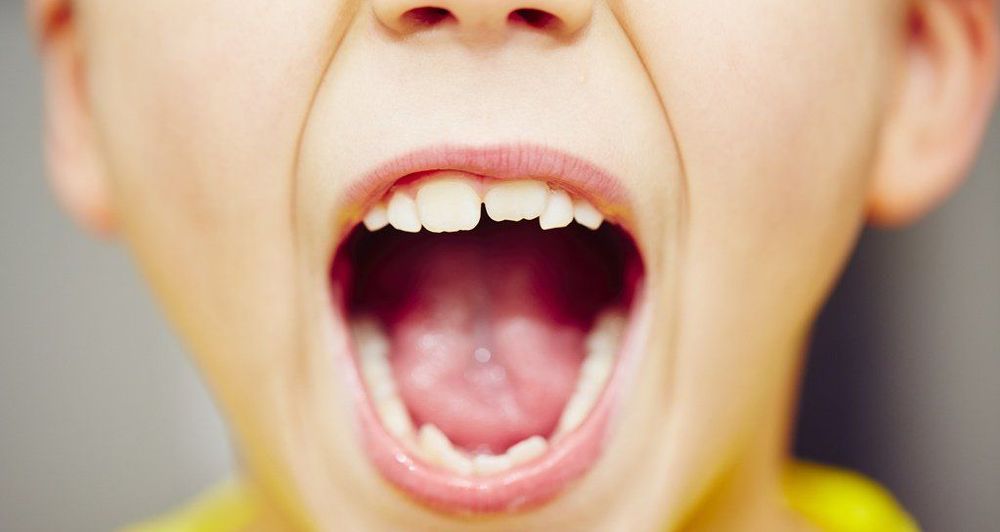
Người bệnh được bác sĩ yêu cầu há miệng, nghiến răng trong quá trình khám dây V
In addition, sensory function of the seventh cranial nerve is demonstrated by taste perception in the anterior two-thirds of the tongue and can be tested with sweet, sour, salty, and bitter solutions. The doctor uses a cotton swab to soak the flavored solutions first on one side of the tongue, then on the other side.
3.6 VIII Because cranial nerve VII has two distinct functions, both vestibular and auditory, the eighth nerve examination also has two distinct goals.
Hearing is first tested in each ear by whispering something while covering the opposite ear. Simultaneously, the Weber and Rinne tests with the tuning fork neurosurgery may be performed to differentiate receptive hearing loss, conductive hearing loss, or both.
Vestibular function can be assessed by testing for nystagmus. The presence and characteristics of the direction, duration, and triggers of nystagmus help identify vestibular disorders and sometimes distinguish central from peripheral vertigo.
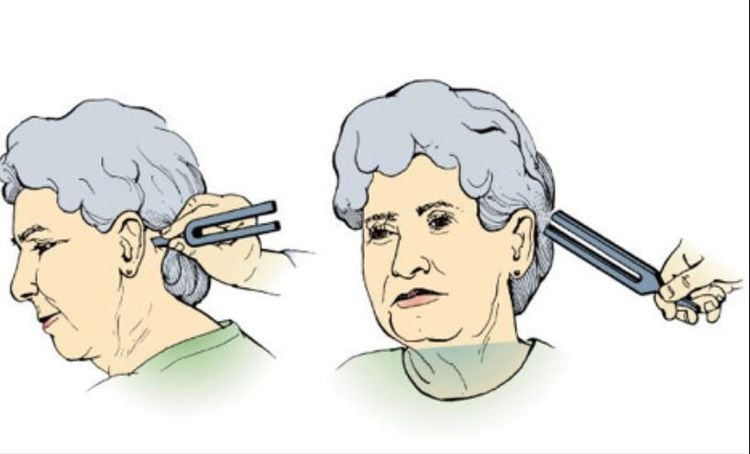
Nghiệm pháp Rinne được sử dụng trong khám dây thân kinh VIII
Taste function was also tested with flavoring agents that stimulate the back of the tongue. At the same time, using tampons to stimulate the nasopharynx or the back of the throat will cause a feeling of nausea.
3.8 Nerve XI The XI cranial nerve is assessed by testing the muscle strength of the muscle groups it innervates.
To evaluate the anterior sternocleidomastoid muscle, the patient is asked to turn the head against the resistance created by the examiner's hand. The other hand should feel the muscle tone while the muscle is active, on the same side as the side of the head.
For the upper trapezius, the patient is asked to raise the shoulder against resistance created by the examiner on the shoulder.
3.9 Nerve XII The cranial nerve XII is evaluated by asking the patient to bring the tongue out and check for any atrophy, weakness, or paralysis of any side.
If the muscles of the tongue are weak on one side, the tongue will be displaced to the opposite side of the affected side.
In summary, the cranial nerves have a role to assume the function of controlling movement and receiving sensations of the head, face and neck region, where it is easy to reveal abnormalities or pathologies. Therefore, through the examination of 12 pairs of cranial nerves, the doctor can make judgments about the disease or diagnose problems occurring in the cranial nerves or from the central nervous system.
Please dial HOTLINE for more information or register for an appointment HERE. Download MyVinmec app to make appointments faster and to manage your bookings easily.




